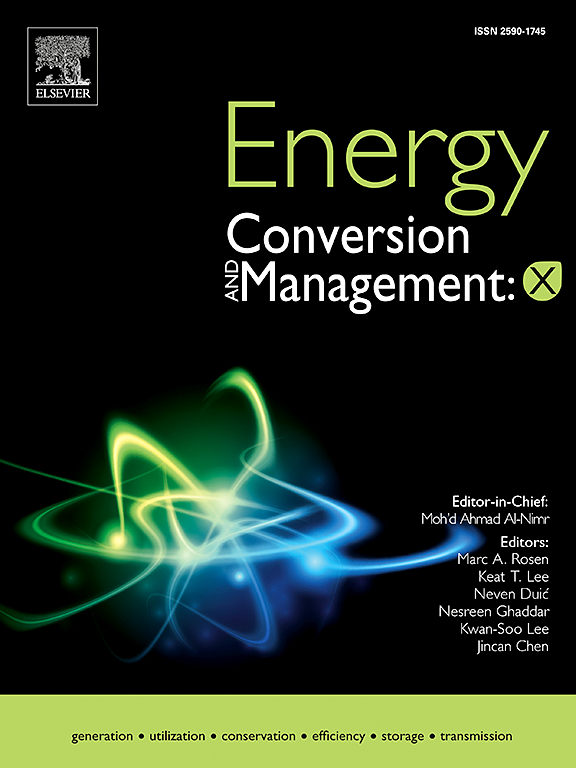Optimization design of an adiabatic compressed air energy storage system with sliding pressure operation and packed bed thermal energy storage based on a one-dimensional loss model
IF 9.9
1区 工程技术
Q1 ENERGY & FUELS
引用次数: 0
Abstract
In compressed air energy storage systems, the finite volume of the storage cavern leads to substantial variations in the pressure of the compressed air throughout the operational process. Operating the compressor and expander in sliding pressure mode can effectively reduce exergy losses associated with throttling, thereby improving the overall efficiency of the system. However, in sliding pressure operation mode, the increase in the compressor’s outlet temperature introduces substantial exergy losses in traditional dual-tank thermal energy storage due to the mixing of fluids at different temperatures. This study proposes an adiabatic compressed air energy storage system that integrates sliding pressure operation with packed bed thermal energy storage. A one-dimensional loss model for the compressor is developed, enabling an analysis of the coupling characteristics under sliding pressure conditions. The developed one-dimensional loss model demonstrates significantly improved accuracy over the general performance model. The optimized compressor, employing inlet guide vane adjustment, mass flow control, and speed regulation, achieves an adiabatic efficiency of over 84.4% under off-design conditions. Furthermore, the packed bed thermal energy storage in sliding pressure mode has higher efficiency compared to constant pressure operation. Among the various configurations analyzed, the integration of sliding pressure operation with packed bed thermal energy storage demonstrates the highest round trip efficiency of 72.6%, achieving an improvement of 11.6%.

求助全文
约1分钟内获得全文
求助全文
来源期刊

Energy Conversion and Management
工程技术-力学
CiteScore
19.00
自引率
11.50%
发文量
1304
审稿时长
17 days
期刊介绍:
The journal Energy Conversion and Management provides a forum for publishing original contributions and comprehensive technical review articles of interdisciplinary and original research on all important energy topics.
The topics considered include energy generation, utilization, conversion, storage, transmission, conservation, management and sustainability. These topics typically involve various types of energy such as mechanical, thermal, nuclear, chemical, electromagnetic, magnetic and electric. These energy types cover all known energy resources, including renewable resources (e.g., solar, bio, hydro, wind, geothermal and ocean energy), fossil fuels and nuclear resources.
 求助内容:
求助内容: 应助结果提醒方式:
应助结果提醒方式:


